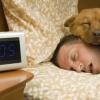Abstract
http://www.ncbi.nlm....pubmed/23727882
Drugs that modulate serotonin (5-HT) synaptic concentrations impact neurogenesis and hippocampal (HPC)-dependent learning. The primary objective is to determine the extent to which psilocybin (PSOP) modulates neurogenesis and thereby affects acquisition and extinction of HPC-dependent trace fear conditioning. PSOP, the 5-HT2A agonist 25I-NBMeO and the 5-HT2A/C antagonist ketanserin were administered via an acute intraperitoneal injection to mice. Trace fear conditioning was measured as the amount of time spent immobile in the presence of the conditioned stimulus (CS, auditory tone), trace (silent interval) and post-trace interval over 10 trials. Extinction was determined by the number of trials required to resume mobility during CS, trace and post-trace when the shock was not delivered. Neurogenesis was determined by unbiased counts of cells in the dentate gyrus of the HPC birth-dated with BrdU co-expressing a neuronal marker. Mice treated with a range of doses of PSOP acquired a robust conditioned fear response. Mice injected with low doses of PSOP extinguished cued fear conditioning significantly more rapidly than high-dose PSOP or saline-treated mice. Injection of PSOP, 25I-NBMeO or ketanserin resulted in significant dose-dependent decreases in number of newborn neurons in hippocampus. At the low doses of PSOP that enhanced extinction, neurogenesis was not decreased, but rather tended toward an increase. Extinction of "fear conditioning" may be mediated by actions of the drugs at sites other than hippocampus such as the amygdala, which is known to mediate the perception of fear. Another caveat is that PSOP is not purely selective for 5-HT2A receptors. PSOP facilitates extinction of the classically conditioned fear response, and this, and similar agents, should be explored as potential treatments for post-traumatic stress disorder and related conditions.
- 1Lieber Institute for Brain Development, Baltimore, MD, USA.
- "Memory, learning, and the ability to relearn that a once threatening stimuli is no longer a danger absolutely depends on the ability of the brain to alter its connections," Catlow told Real Clear Science. "We believe that neuroplasticity plays a critical role in psilocybin accelerating fear extinction."
http://www.ncbi.nlm....pubmed/14615876
"low doses of psilocybin were found to produce little to no differences in general well-being, emotional excitability, anxiety, depression, heart rate, or blood pressure, so the risk of adverse side effects seems minimal."
Edited by birthdaysuit, 13 February 2016 - 12:18 AM.



































































